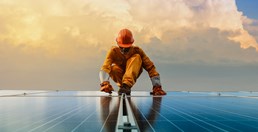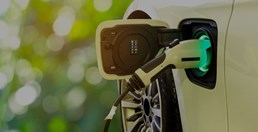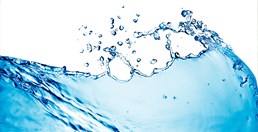Committed to a Sustainable, Resilient Hawai‘i
As one of the most geographically isolated places in the world, Hawaiʻi has much to gain by transforming itself into a more self-sufficient and resilient community equipped to meet the challenges of the 21st Century.
Renewable Energy

Energy in Hawaiʻi not only represents one of the largest expenses for businesses and residents, it also contributes to carbon emissions and direct environmental impacts.
Clean Transportation

Most of Hawaiʻi’s fossil fuels are used to move people and goods, with ground transportation accounting for 27% of the state’s total petroleum usage and 53% of greenhouse gas emissions.
Local Food Production

With Hawaiʻi importing nearly 90% of its food, our island communities risk food insecurity from events beyond our control, such as major hurricanes or shipping delays.
Freshwater

Hawaiʻi's freshwater resources are finite. Failing to be effective stewards of "wai" is especially precarious for an island state.

Renewable Energy
Energy in Hawaiʻi not only represents one of the largest expenses for businesses and residents, it also contributes to carbon emissions and direct environmental impacts.

Clean Transportation
Most of Hawaiʻi’s fossil fuels are used to move people and goods, with ground transportation accounting for 27% of the state’s total petroleum usage and 53% of greenhouse gas emissions.

Local Food Production
With Hawaiʻi importing nearly 90% of its food, our island communities risk food insecurity from events beyond our control, such as major hurricanes or shipping delays.

Freshwater
Hawaiʻi's freshwater resources are finite. Failing to be effective stewards of "wai" is especially precarious for an island state.
Our Impact Since 2009
Total funded to local efforts and solutions since 2009
Pounds of food locally produced in 2018
Renewable energy generation statewide average in 2023 (based on net electricity generation)
Registered passenger electric vehicles in Hawai‘i as of September 2025 (15% increase from the same month last year)
Latest News & Events
View All NewsOctober 02, 2025
Statement by Ulupono Initiative on Hawaiian Electric’s rooftop solar and storage milestone
“Ulupono Initiative congratulates Hawaiian Electric and the people of Hawai‘i on reaching this remarkable clean energy milestone ... a testament to the vision and commitment of Hawai‘i’s communities in shaping our shared future ..."
September 18, 2025
The Nature Conservancy receives grant to build coastal resilience through improved wastewater management in Hawai‘i
The Nature Conservancy (TNC) received a three-year $125,000 grant from the Ulupono Fund at the Hawai‘i Community Foundation to develop innovative tools and advance policies that support viable wastewater conversion to protect Hawaiʻi’s people, fresh water supplies and marine life.
Let's Stay in Touch!
Sign up to receive our newsletter and get the latest Ulupono news right in your inbox.

